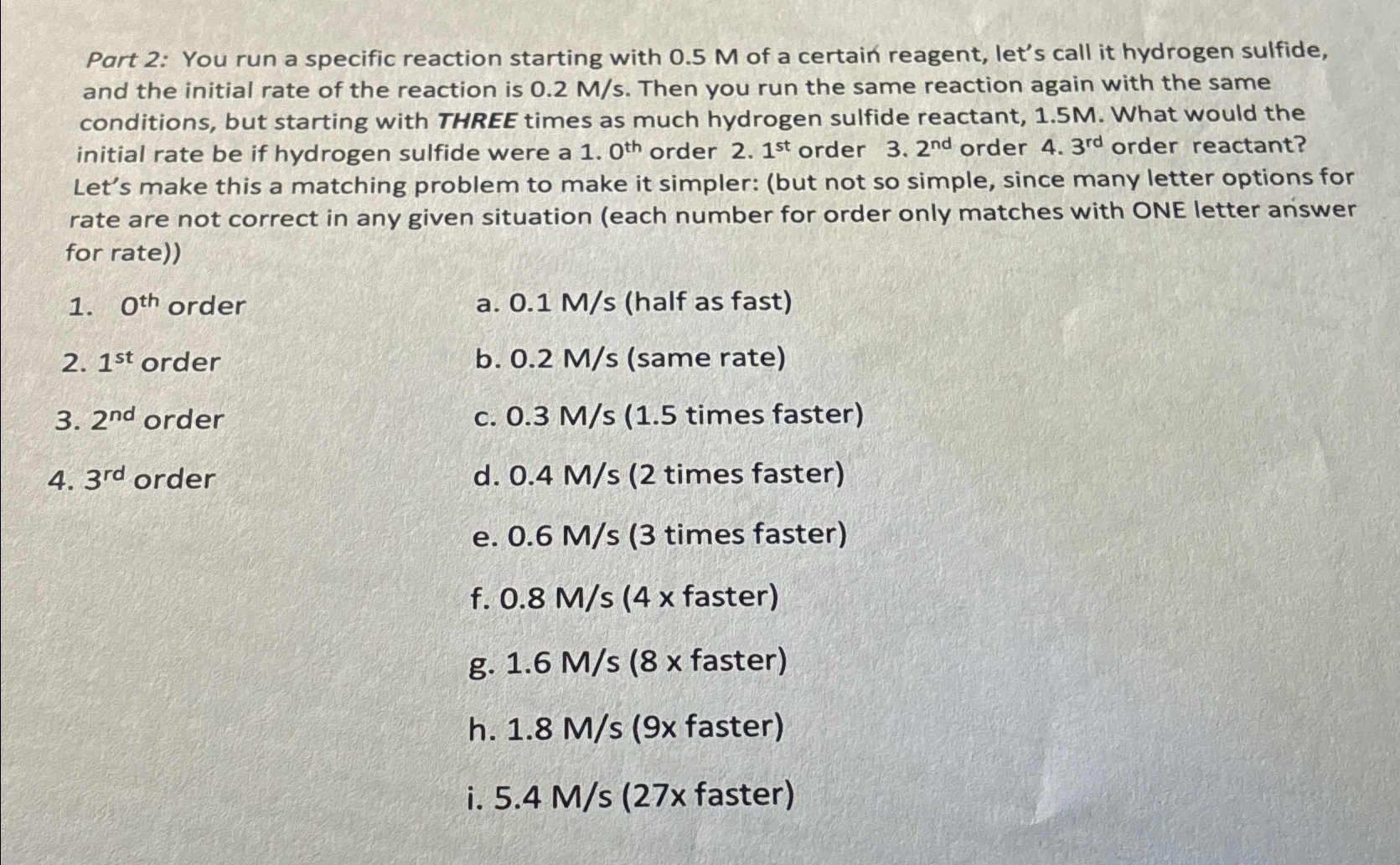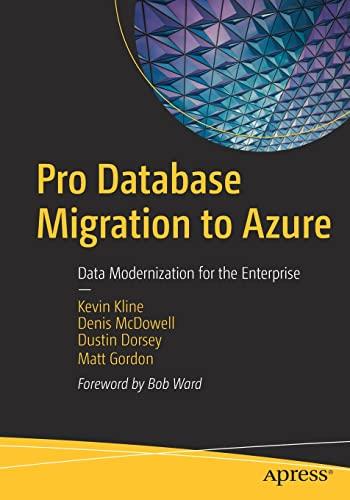Question
Part 2: You run a specific reaction starting with 0.5M of a certain reagent, let's call it hydrogen sulfide, and the initial rate of the
Part 2: You run a specific reaction starting with
0.5Mof a certain reagent, let's call it hydrogen sulfide, and the initial rate of the reaction is
0.2(M)/(s). Then you run the same reaction again with the same conditions, but starting with THREE times as much hydrogen sulfide reactant, 1.5M. What would the initial rate be if hydrogen sulfide were a
1.0^(th )order
2.1^(st )order
3.2^(nd )order
4.3^(rd )order reactant? Let's make this a matching problem to make it simpler: (but not so simple, since many letter options for rate are not correct in any given situation (each number for order only matches with ONE letter answer for rate))\
0^(th )order\ a.
0.1(M)/(s)(half as fast)\
1^(st )order\ b.
0.2(M)/(s)(same rate)\
2^(nd )order\ c.
0.3(M)/(s)(1.5 times faster)\
3^(rd )order\ d.
0.4(M)/(s)(2 times faster)\ e.
0.6(M)/(s)(3 times faster)\ f. faster)\ g. faster)\ h.
1.8(M)/(s)(9x faster)\ i.
5.4(M)/(s)(
27xfaster)

Step by Step Solution
There are 3 Steps involved in it
Step: 1

Get Instant Access to Expert-Tailored Solutions
See step-by-step solutions with expert insights and AI powered tools for academic success
Step: 2

Step: 3

Ace Your Homework with AI
Get the answers you need in no time with our AI-driven, step-by-step assistance
Get Started


